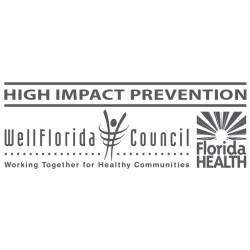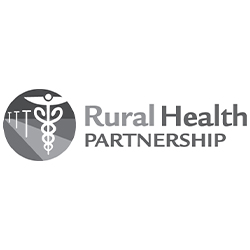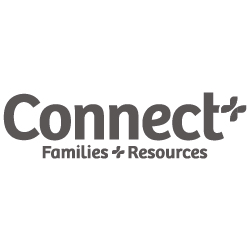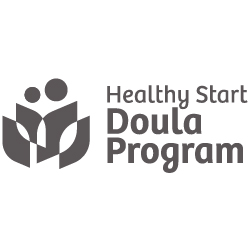Need is great for dentists to serve medicaid patients locally
Gainesville Sun, August 4, 2011
Lyndcey Brown, 3, climbed up into the dental exam chair recently at the Fearnside Family Services Center in northeast Gainesville and helped Dr. Micaela Gibbs brush the teeth of a stuffed alligator.
“Can you open your mouth like a big alligator?” Gibbs asked. “You have such pretty teeth. … Do you brush your teeth?”
“Yes, ma’am,” Lyndcey answered.
Lyndcey was getting her teeth checked and a fluoride gel put on them to help prevent cavities as part of a partnership between the University of Florida College of Dentistry and the United Way of North Central Florida to promote good dental hygiene in an area of Alachua County that struggles with the issue.
“You can talk to the kids, and you’ve got the parents as a captive audience,” said Gibbs, a dentistry professor at UF, adding that healthy teeth starts at home with the parents setting a good example.
As Florida and Alachua County continue to struggle with providing dental health care to their poorest residents, a new survey shows the overwhelming reason children and adults on Medicaid don’t have a regular dentist: Out of 102 people surveyed, more than 40 said they simply can’t afford it, while nearly 40 percent said they can’t find a dentist who accepts Medicaid.
“You’ll push the care envelope as long as you can and seek help when it becomes urgent,” said Jeff Feller, chief operating officer of the WellFlorida Council, a private nonprofit organization that provides health needs assessments, evaluations, hospital utilization data reports, grant writing, development, management and marketing to health departments, government agencies and nonprofits.
In Lyndcey’s northeast Gainesville neighborhood, more than 165 caretakers of third-graders and seventh-graders responded to a recent survey about dental health care, paid for by a grant from the DentaQuest Foundation. Researchers found that:
— 22 percent said they were unable to obtain needed oral health care in the past year.
— 37 percent said cost was the main reason, while 31 percent said the availability of dentists stopped them and 26 percent cited their insurance status (or lack thereof).
— 33 percent lacked dental insurance for their children — compared with 12 percent who lacked medical insurance.
— 74 percent of caretakers supported on-site school dental programs.
Gibbs saw at least 30 patients in one day in July. It was the third time this summer she and her colleagues had seen patients, most of whom are on Medicaid.
“I love it,” Lyndcey’s mother, 39-year-old Tammie Murphy, said of the clinics. “It’s so helpful and convenient, and she’s very excited about it. She’s always been excited about brushing her teeth.”
But Lyndcey might be in the minority among Alachua County’s youth receiving dental services through Medicaid. A recent screening of 125 third-graders at Shell, Rawlings and Metcalfe elementary schools, all of which have a high rate of children on free and reduced lunches, shows 56 of the students needed early or urgent care, nearly 50 had an untreated cavity and half had had a cavity experience during their lifetime.
Dr. Scott Tomar, a professor of dentistry at UF, said our society still does not recognize that the mouth is an integral part of the rest of the body and that all systems work together.
“There is no biological or ethical reason for excluding oral health care services from health insurance,” said Tomar, who teaches community dentistry and sits on the Alachua County Dental Health Coalition.
“There is something fundamentally flawed in a system that will pay to treat an infected finger or toe, but not an infected tooth, and leaves more than one in five caretakers of schoolchildren in our community unable to access dental care. It is unacceptable that one-half of third-graders on the east side of our county have already been affected by tooth decay.”
In a year-long series of stories, The Gainesville Sun has analyzed statistics from the State Oral Health Improvement Plan for Disadvantaged Floridians, findings from the Pew Center on the States’ 2010 and 2011 “Children’s Dental Campaign” reports and numbers from the Centers for Disease Control and Prevention.
The analysis found that Florida has one of the worst records in the country for providing dental care for its most vulnerable residents — children who are on Medicaid and live in poor and/or rural communities.
Florida received an F again this year from the Pew Center on the States, meeting only two of eight Pew Center benchmarks: 78.3 percent of residents being on a fluoridated water system and state Medicaid paying for preventive care.
Florida is last in the nation in two critical areas: Medicaid reimbursement (although the Legislature recently approved increasing this amount) and Medicaid-eligible children utilizing dental services.
In Florida, only one in four children on Medicaid utilized dental services in 2009.
And Florida is one of eight states that does not track cavity rates in its populations.
But state lawmakers did pass legislation in May that allows dental hygienists to put on sealants, which are clear, plastic coatings over the molars that prevent cavities, without having a dentist examine the children first.
Cavities are the most prevalent disease in young children, affecting more than one-fourth of kids between 2 and 5, according to the CDC. By their teen years, two-thirds of children from low-income homes have suffered tooth decay.
Back at the dental health screening, Gibbs gave a goody bag to Lyndcey filled with a toothbrush, toothpaste and dental floss, along with some information pamphlets for her mom.
“She’s got such a great start — a great foundation,” Gibbs told Lyndcey’s mother. “She’ll be healthy as long as she brushes twice a day, eats healthy snacks and stays away from sugary drinks.”
To read the published article: Need is great for dentists to serve medicaid patients locally
Back to News page












